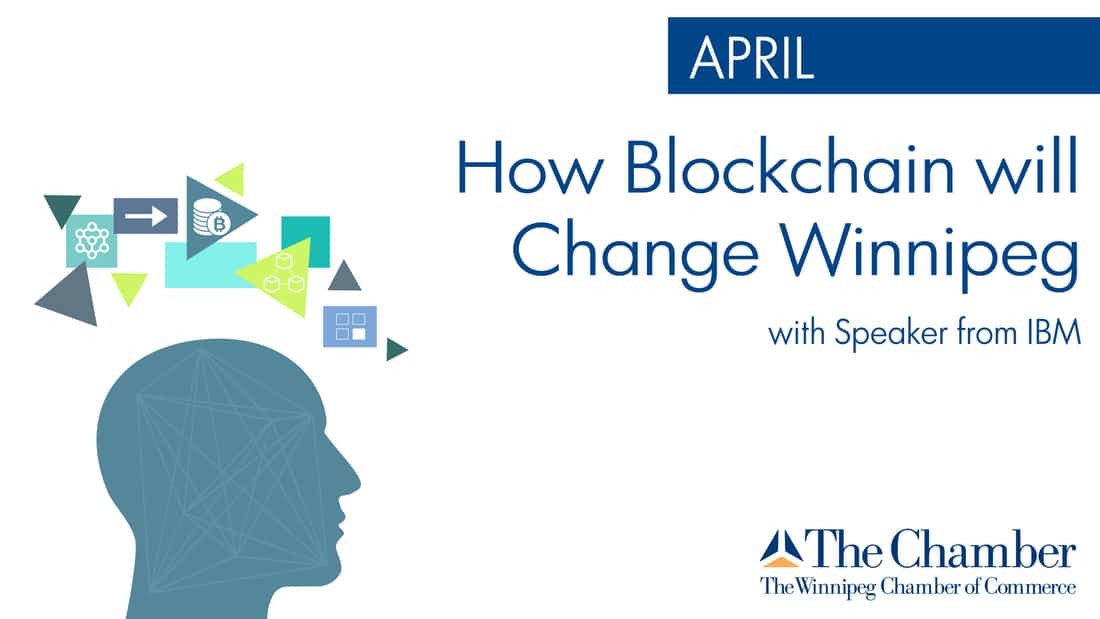Chances are you’ve heard of blockchain and know its important to your business. But if you’re fuzzy on the details as to what blockchain is or how it will impact your industry (most likely it will), you’re not alone.
On April 26, The Chamber’s membership luncheon How Blockchain will Change Winnipeg features IBM’s Christopher Kirby who will talk about this backbone of a new type of Internet – where information can be distributed but not copied or stolen.
To get you up-to-speed on blockchain we’re breaking it down:
- Part 1: What is (and isn’t) blockchain?
- Part 2: Why should you care about blockchain?
- Part 3: Meet April’s keynote speaker Chris Kirby from IBM
- Part 4: How is your industry going to be impacted?
Global spending on blockchain solutions is expected to be almost $11.7B by 2022.
Last year 60 per cent of companies using blockchain were from the financial services industry but the technology can be used by almost every company, no matter its focus or industry.
Despite what you may have heard, blockchain is not the same thing as bitcoin or other cryptocurrencies. Blockchain is the technology and bitcoin is its application.
The easiest way to think about blockchain is that it’s a collection of transactions, like entries in an accounting system. This is why people sometimes call blockchain a ledger.
The “blocks” on the blockchain are made up of digital pieces of information. The goal of blockchain is to allow digital information to be recorded and distributed, but not edited.
The information a block stores has three parts:
- Information about the transaction itself (things like the date and time, for example)
- Information about who is participating in the transaction (not actual names with identifying information, rather a “digital signature” like a username)
- Information that makes the block itself unique so we can tell it apart from every other block (this it called a “hash”)
When a transaction happens, the block stores new data and it’s added to the chain. A copy of the transaction is stored on each user’s computer. So, every time there’s a new transaction, a new block is added to the ledger and an update is sent out to the rest of the network of computers so everyone has a copy. Each of these copies of the blockchain is identical, meaning the information is spread across thousands or even millions of computers at the same time.
New blocks are always added to the end of each blockchain and the blockchain network –which can be public or private—automatically refreshes every ten minutes.
After a block has been added, it’s very hard to go back and change the contents of the block because each block contains it own unique information. Why is this important? By storing blocks of information that are identical across its network, the blockchain cannot be controlled or validated by one single entity.
Let’s say someone wants to go in and edit the information—as soon as they do so, the block’s unique hash changes. However, the next block in the chain will still have the old hash and so they would need to go and update that block too. And as soon as they update the block to cover their tracks, THAT block’s hash changes too. So, to change just one block you would need to change every single block after it on the blockchain—meaning its very difficult to edit a block once it’s added to the chain and impossible to delete. Since no centralized version of the information exists for a hacker to corrupt, there is no single point of failure.
There is a lot more to talk about when it comes to blockchain, including how it stands to make business and government operations more accurate, efficient and secure. Stay tuned.





